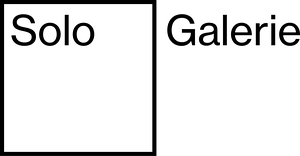House of One
September 23–November 26, 2016
Grand Palais, Paris, France
11 rue des Arquebusiers
Le Marais
75003 Paris
France
Hours: Tuesday–Saturday 1–7pm
T +33 6 22 80 69 34
contact@solo-galerie.com
Solo Galerie is a global representation platform for internationally renowned architects. As a personal project of Christian Bourdais, founder of Solo Houses in Spain, and Eva Albarran, a contemporary art producer, Solo Galerie focus on architects whose practice extend to an artistic dimension. The gallery’s exhibitions will frequently be echoed by monumental pieces produced and shown in collaboration with art institutions.
House of One
In the center of Berlin, the House of One arises: an inter-religious house of prayer and learning, which also addresses the secular urban communities. Berlin-based architects Kuehn Malvezzi won the international architectural competition for the House of One in 2012. A synagogue, a church and a mosque will be built under one roof. The House of One is a solid brick building that presents itself as an entity free from religious symbolism in the urban space. The internal organization of the building, however, is detached from the external structure. Here the three Abrahamic religions claim their respective liturgical autonomy, with synagogue, church and mosque as heterogeneous structures, like houses grouped around a central square. This place, a high domed hall in the center, is both an in-between space and a place of encounter, continuing the urban space of Berlin into the building.
Le Centquatre and Solo Galerie in Paris are dedicating two solo exhibitions to the design of Kuehn Malvezzi for the House of One. The two simultaneous exhibitions in different contexts in the city open up the possibility to experiment with specific forms of representation of an architectural project and to discuss the project at different levels.
Solo Galerie, Paris
A total of five models and model series are on view. Each room of the gallery is dedicated to a specific aspect of the House of One. The models are not proposed in the sense of classical architectural models, as realistic representations of the House of One, but as experimental arrangements, to develop the conceptual considerations of the project. Kuehn Malvezzi has invited artists Armin Linke and Marko Lulić to create further models of the House of One in their respective media and coming from their respective artistic practices. Common to all is a relational understanding of space and architecture.
As with building blocks, each model in the series “Volumes,” consists of different geometric shapes. When arranged they can provide the cubature of the House of One—or completely different architectures of the same volume. In addition to the play with volumes comes a play with materials. Styrofoam, wood and marble are considered in relation to one another, whereby the weight of the material determines the size of the model.
While “Volumes” embraces the House of One as a constellation in an urban context, a context in which it both finds itself and proceeds to alter, Spaces negotiates the interiors and the constellation of the three sacred spaces that are arranged around a central fourth room. As cut-outs, the outlines of the interior spaces form various constellations, that, freely suspended in the space, simultaneously involve the urban area.
Armin Linke’s series of photographs entitled “Model of Gestures” follows the liturgical actions of Jews, Christians and Muslims in their sacred spaces. The video Model of Relations explores the various relationship possibilities within a common area in the form of a performance choreographed by Marko Lulić. Referencing historical circle dances, the dancers translate the ideal of unity and its ruptures into movement in space.
Le Centquatre, Paris
It’s specific program and the open and public spaces make the Centquatre a place of encounter for culturally diverse residents of the neighborhood and the wider city. A first version of the House of One on a 1:1 scale is now accessible for the public to experience in the central hall of the Centquatre. The installation of Kuehn Malvezzi demarcates a floor plan of the House of One onto the Halle Aubervilliers. At the same time the information transmitted in the Centquatre constellation of spaces is reminiscent of the sequences of blocked off spaces, which we know from the game of hopscotch, where they are scratched and drawn onto streets in various cultures across the world. The visitors of the Centquatre are invited to experience the hall in a new way, by using the demarcated zones as play areas, and to repeatedly try out new relations.


